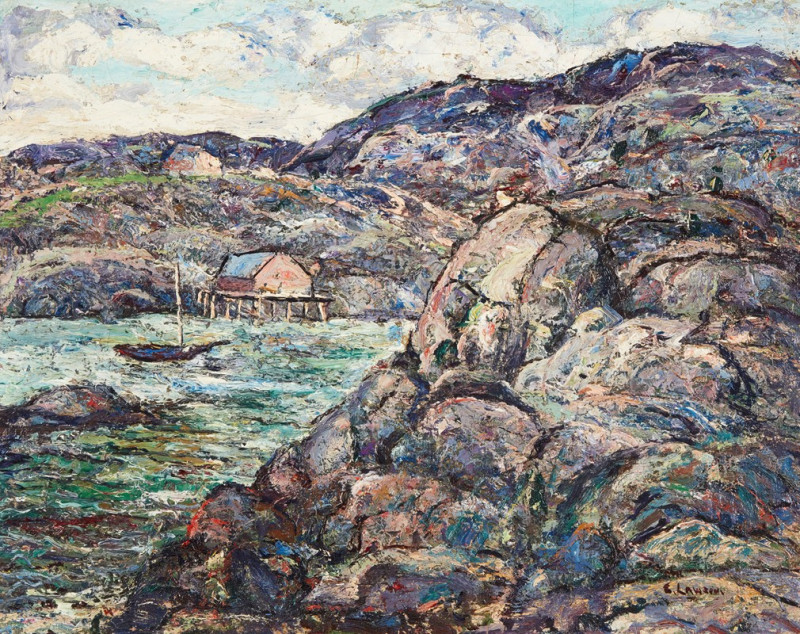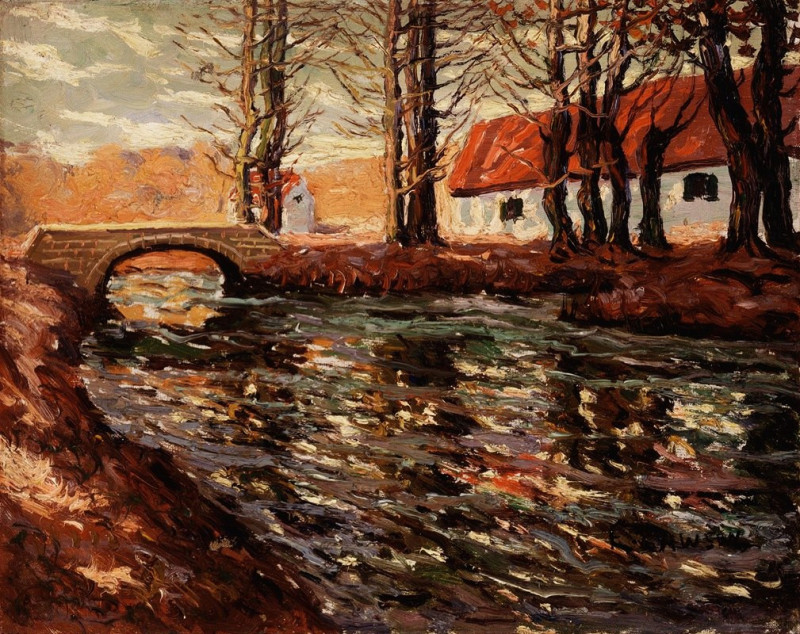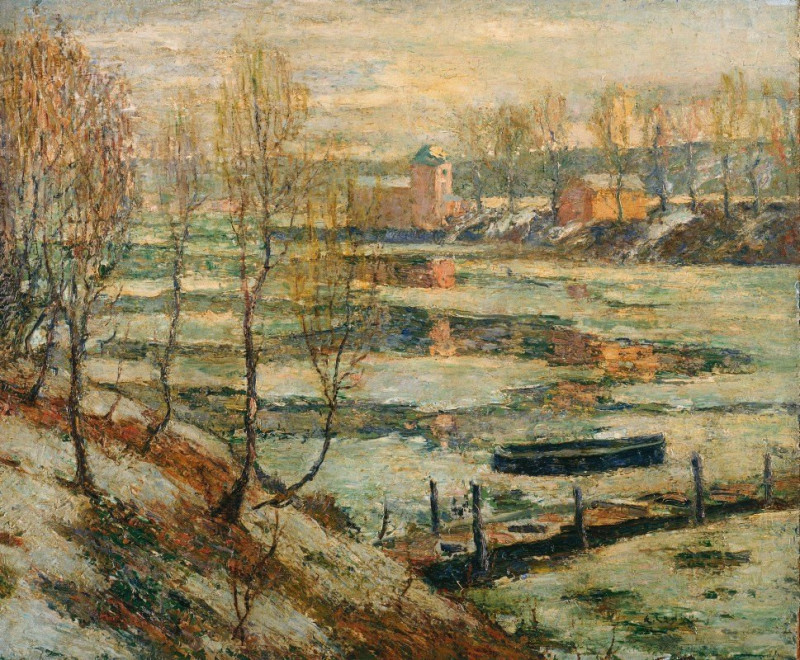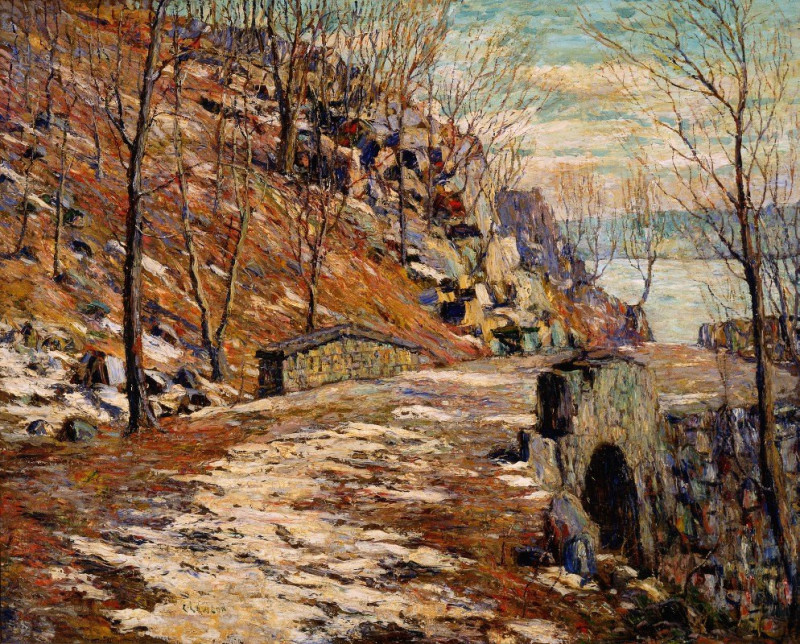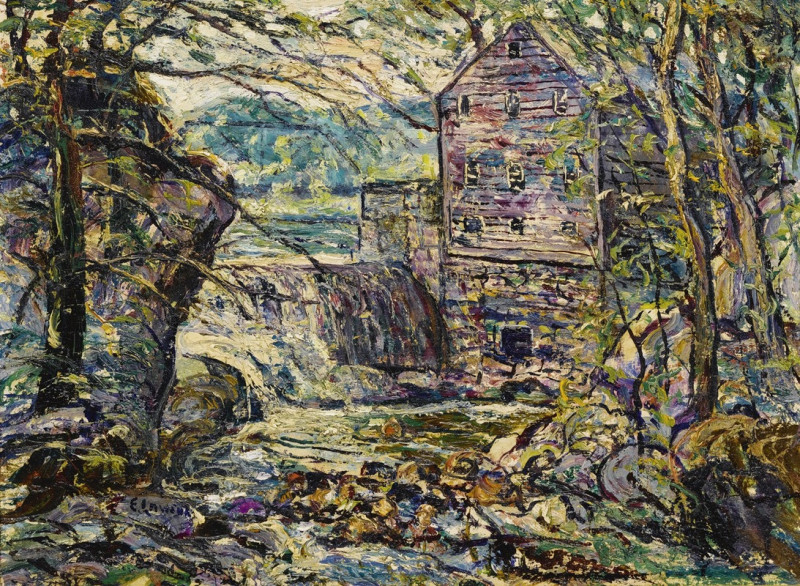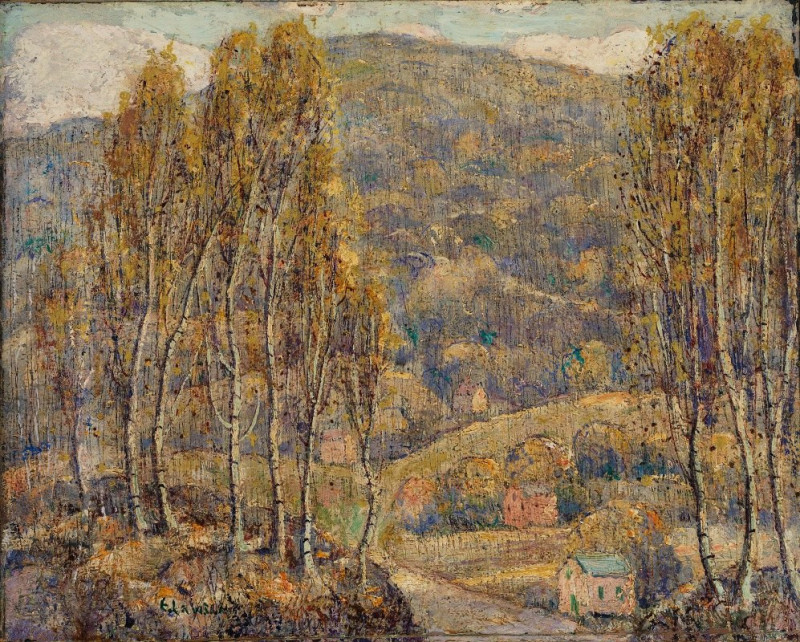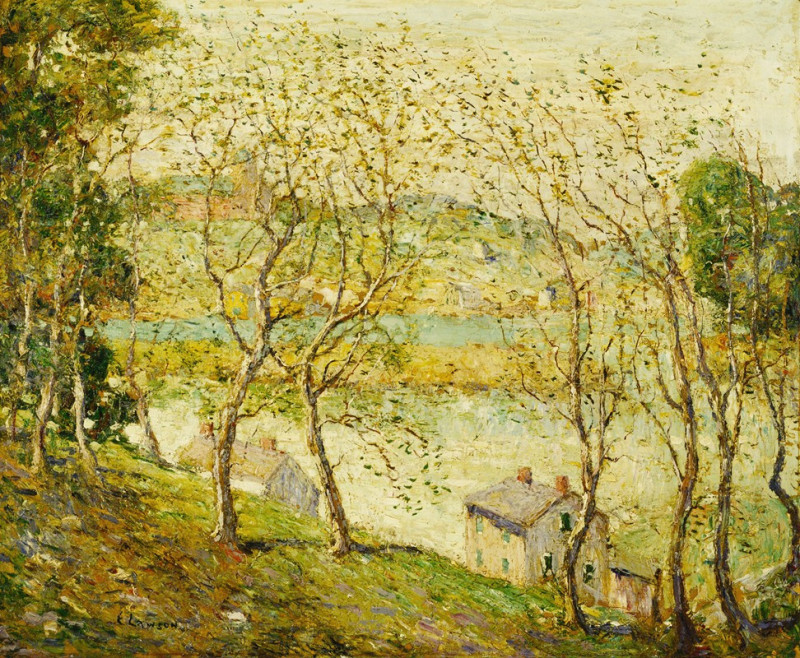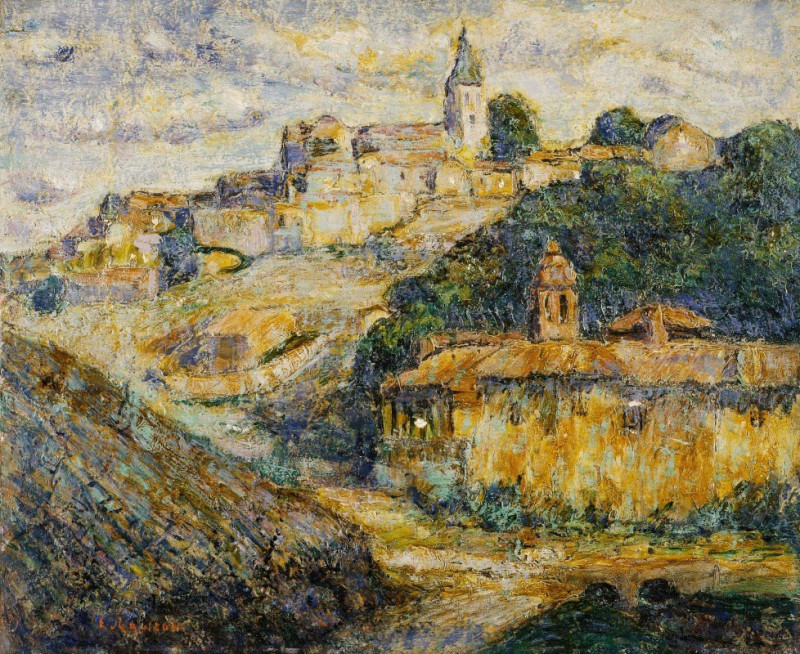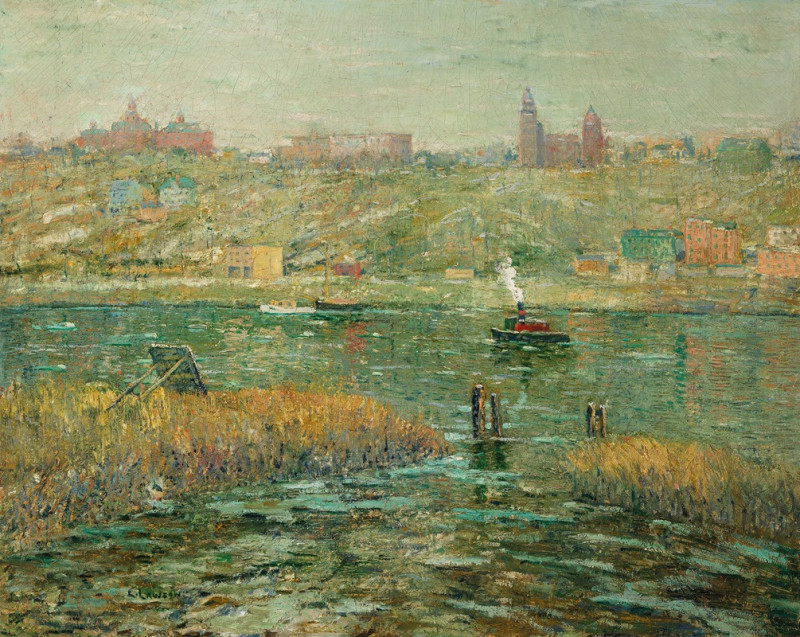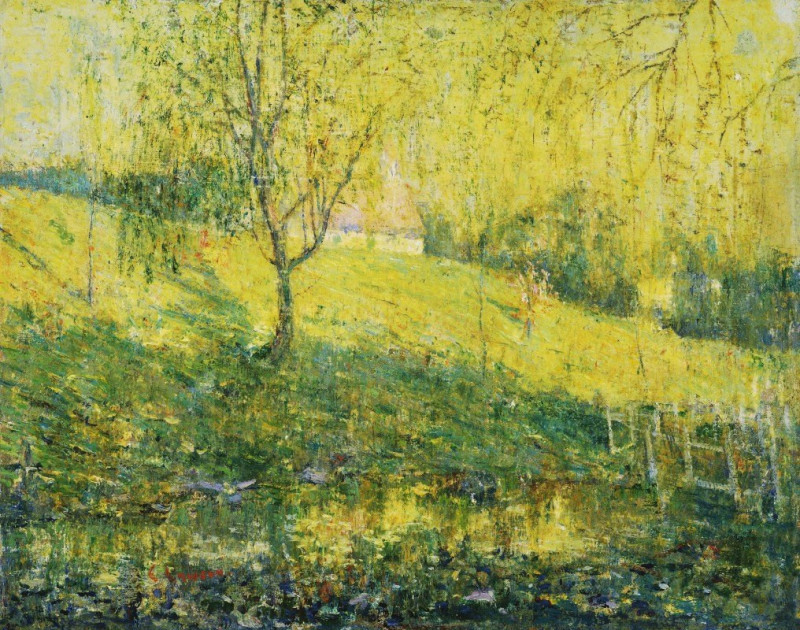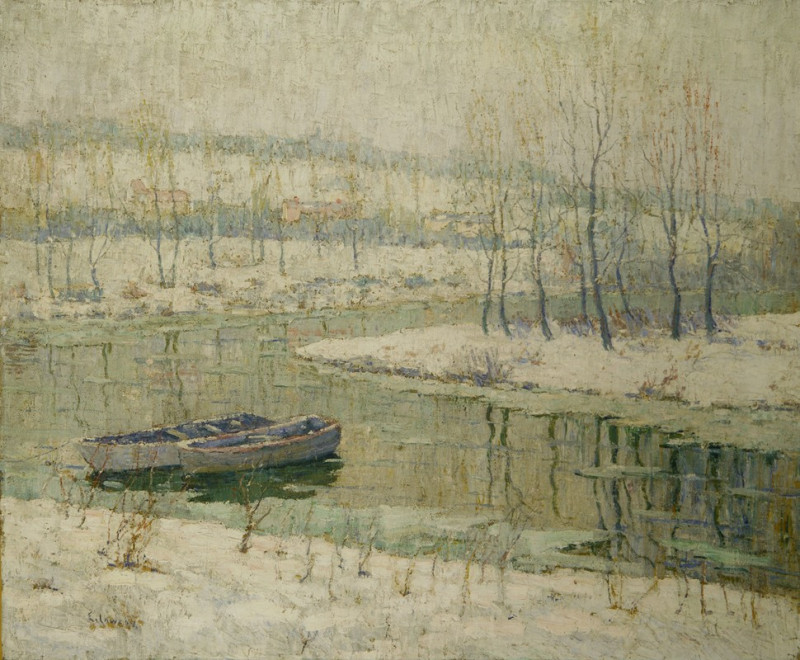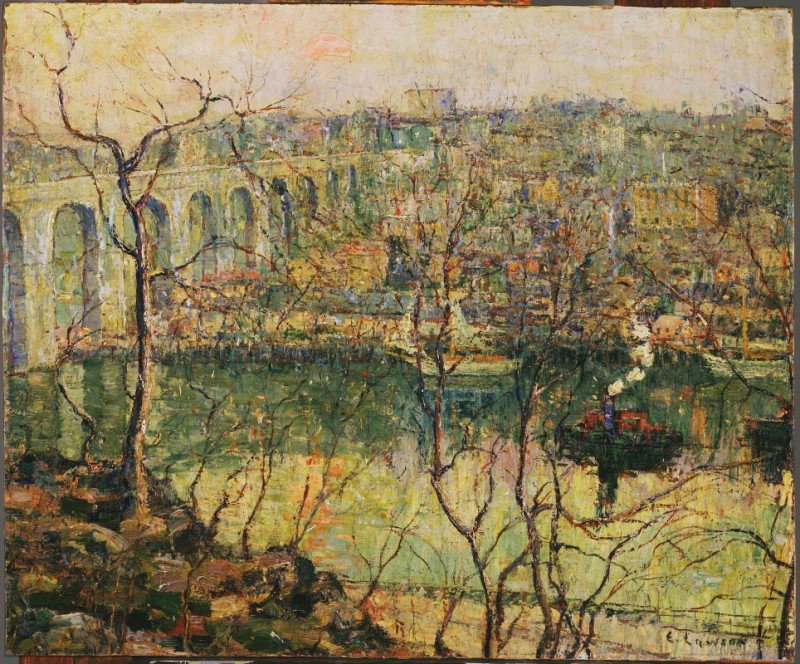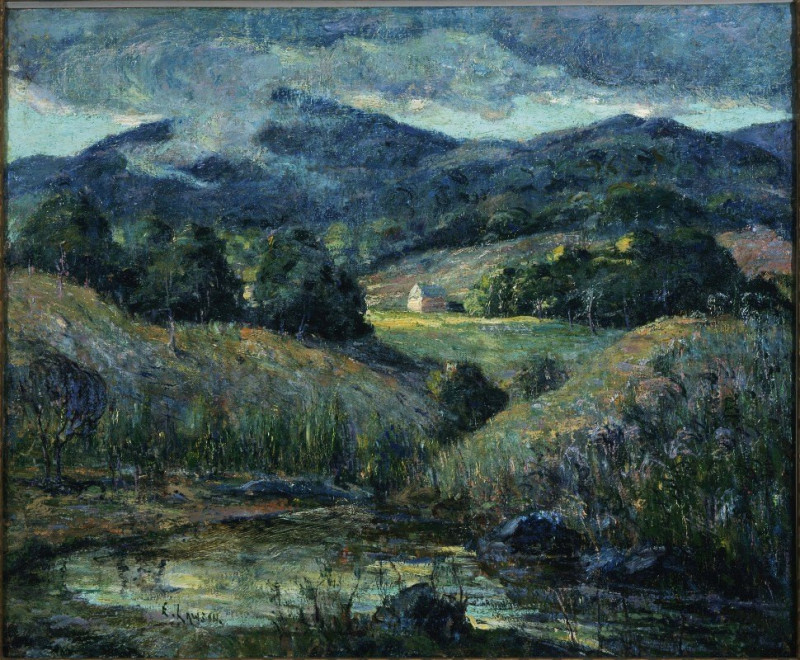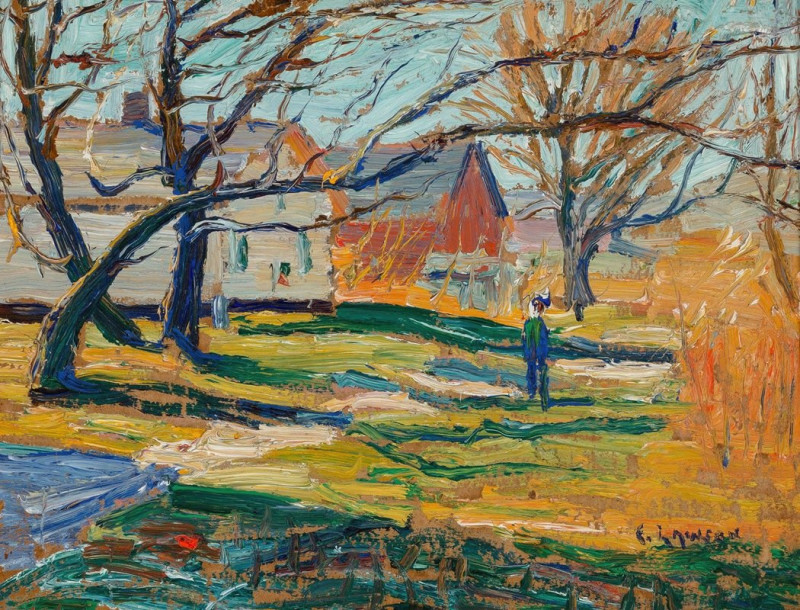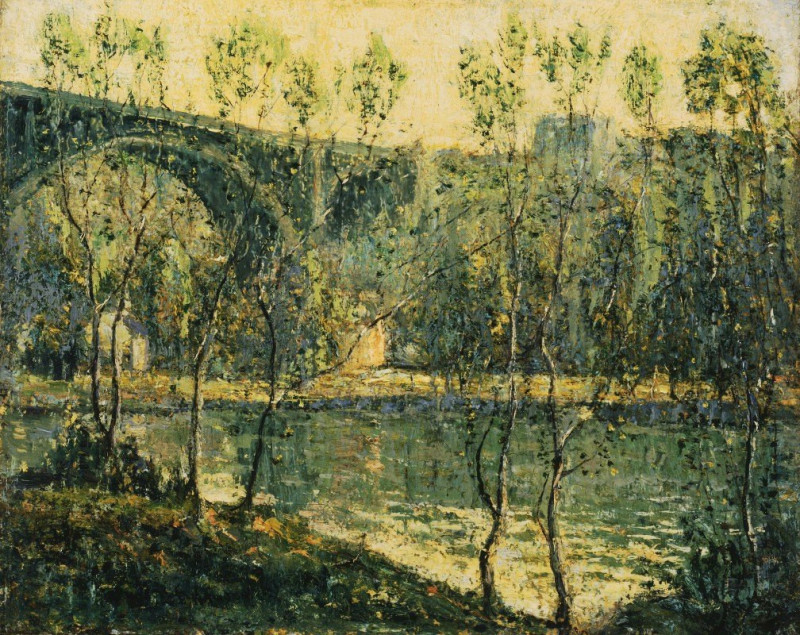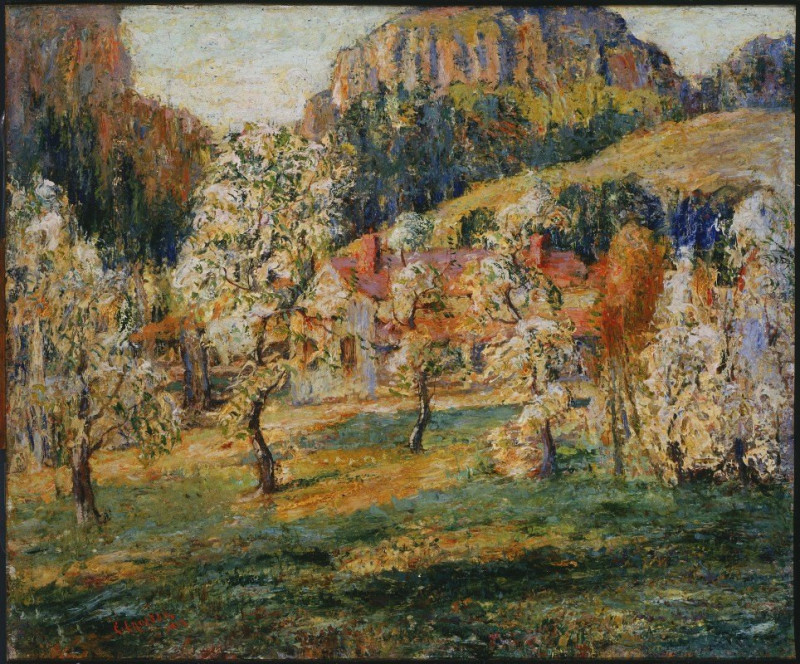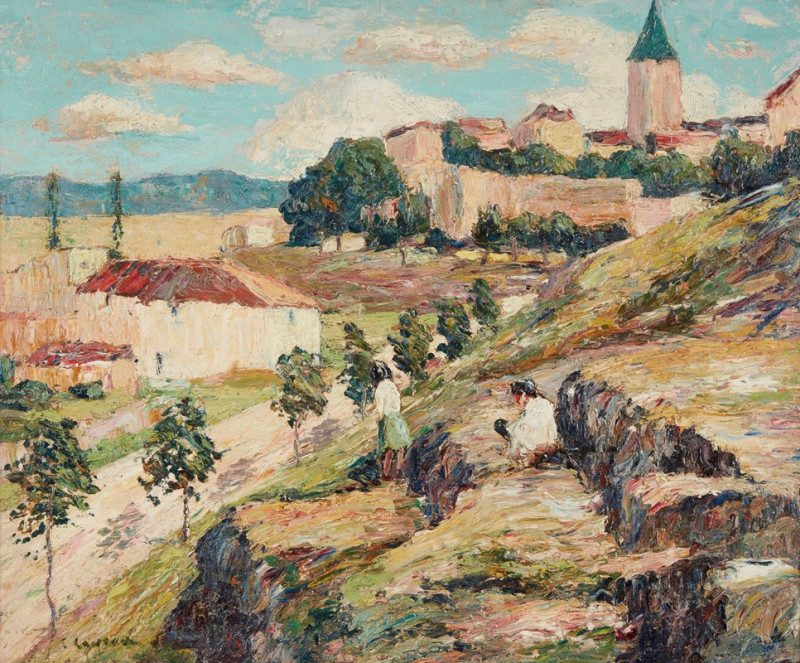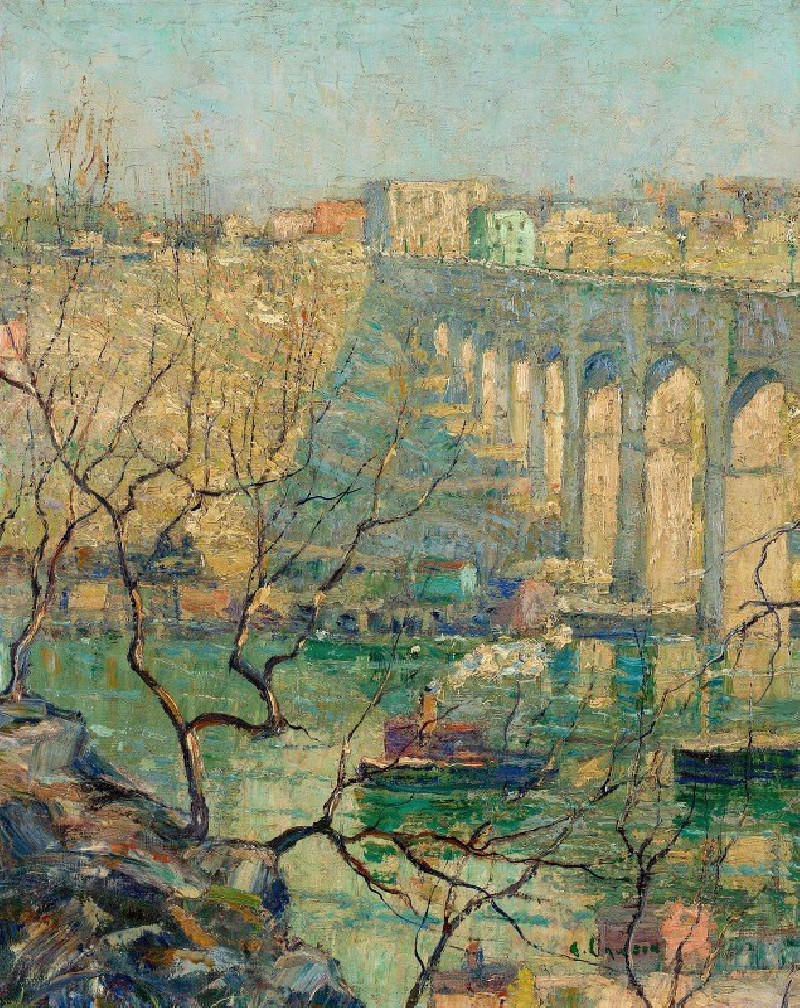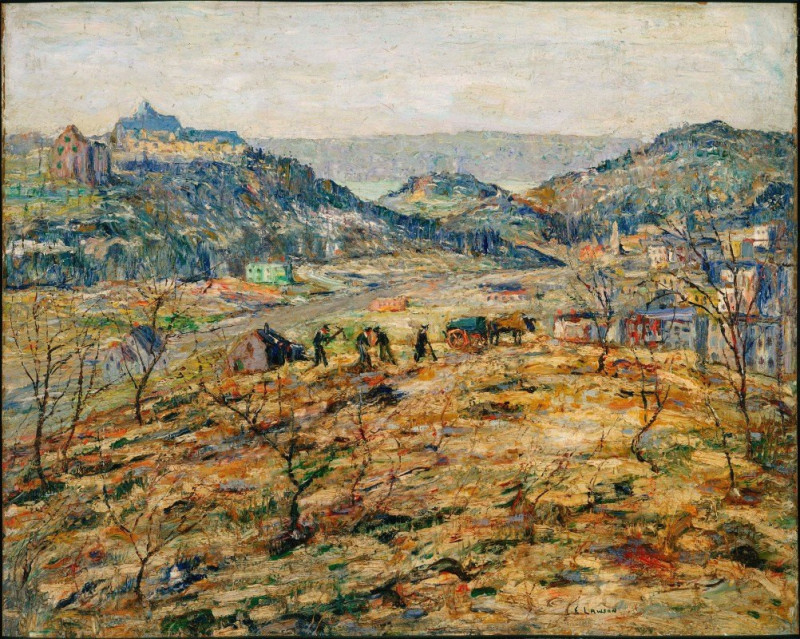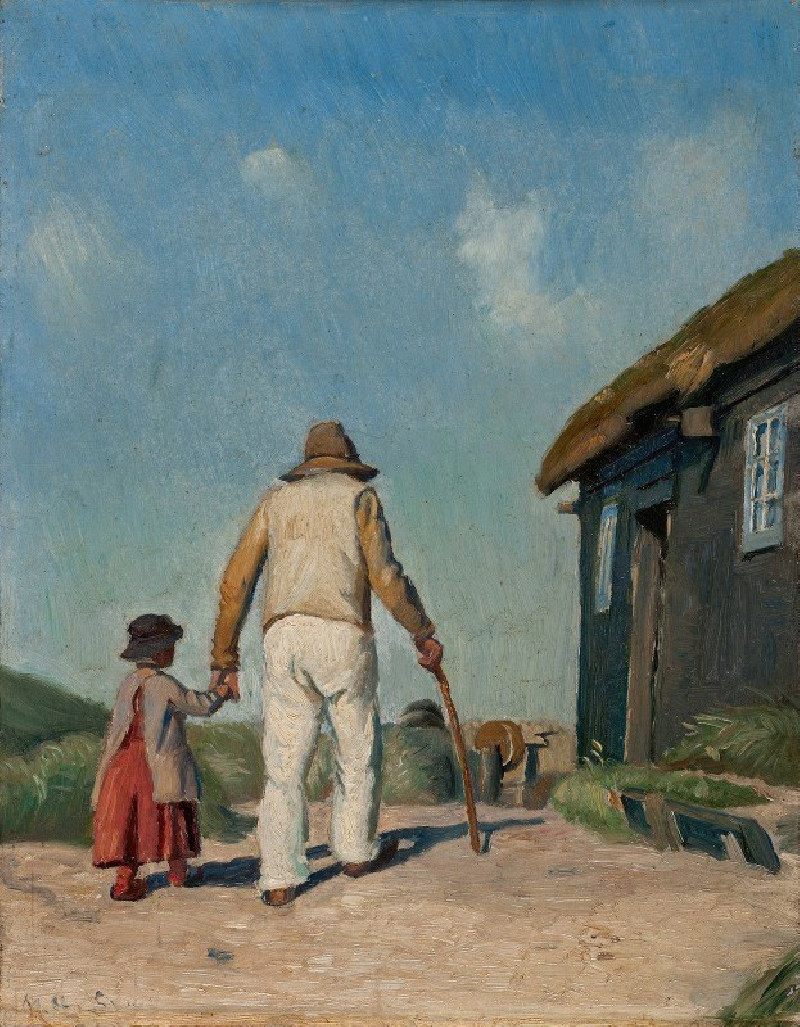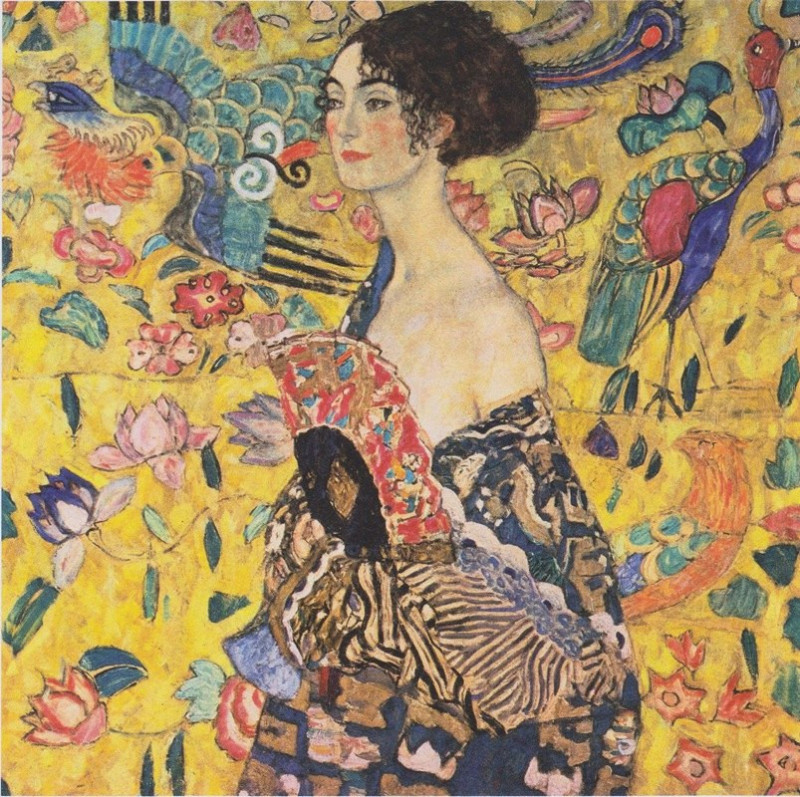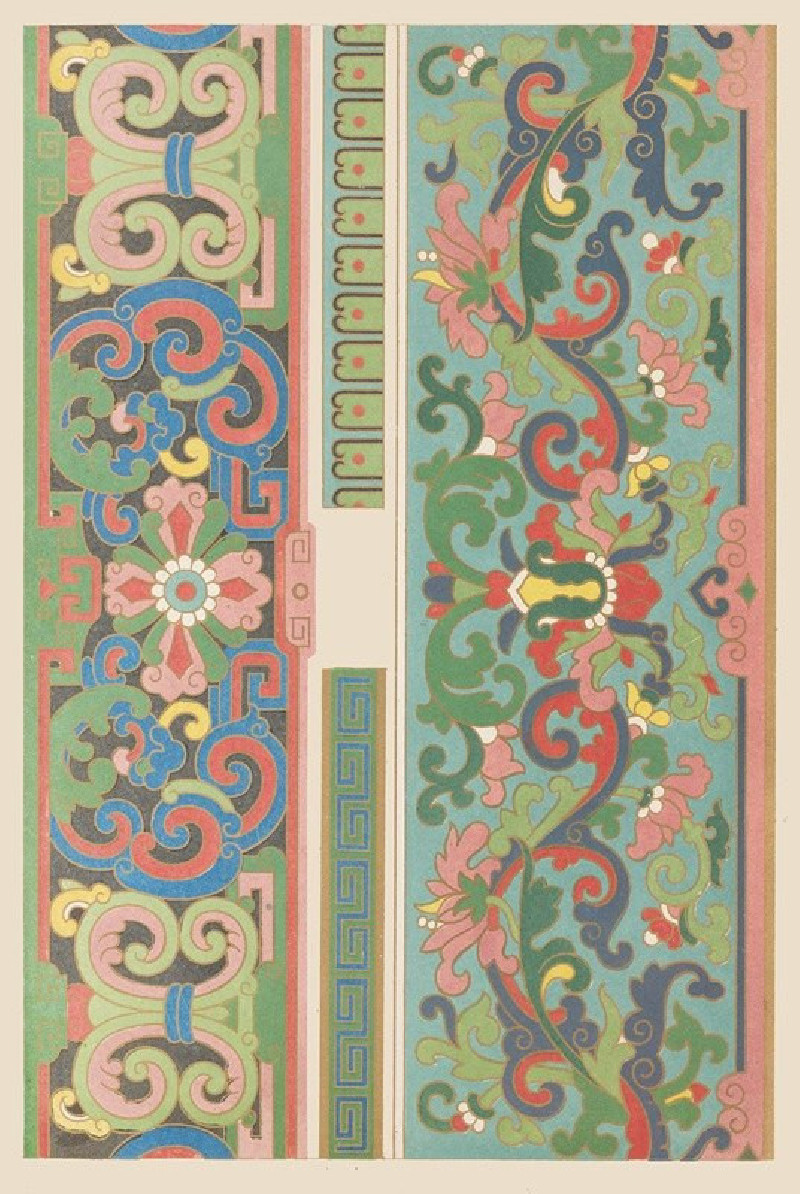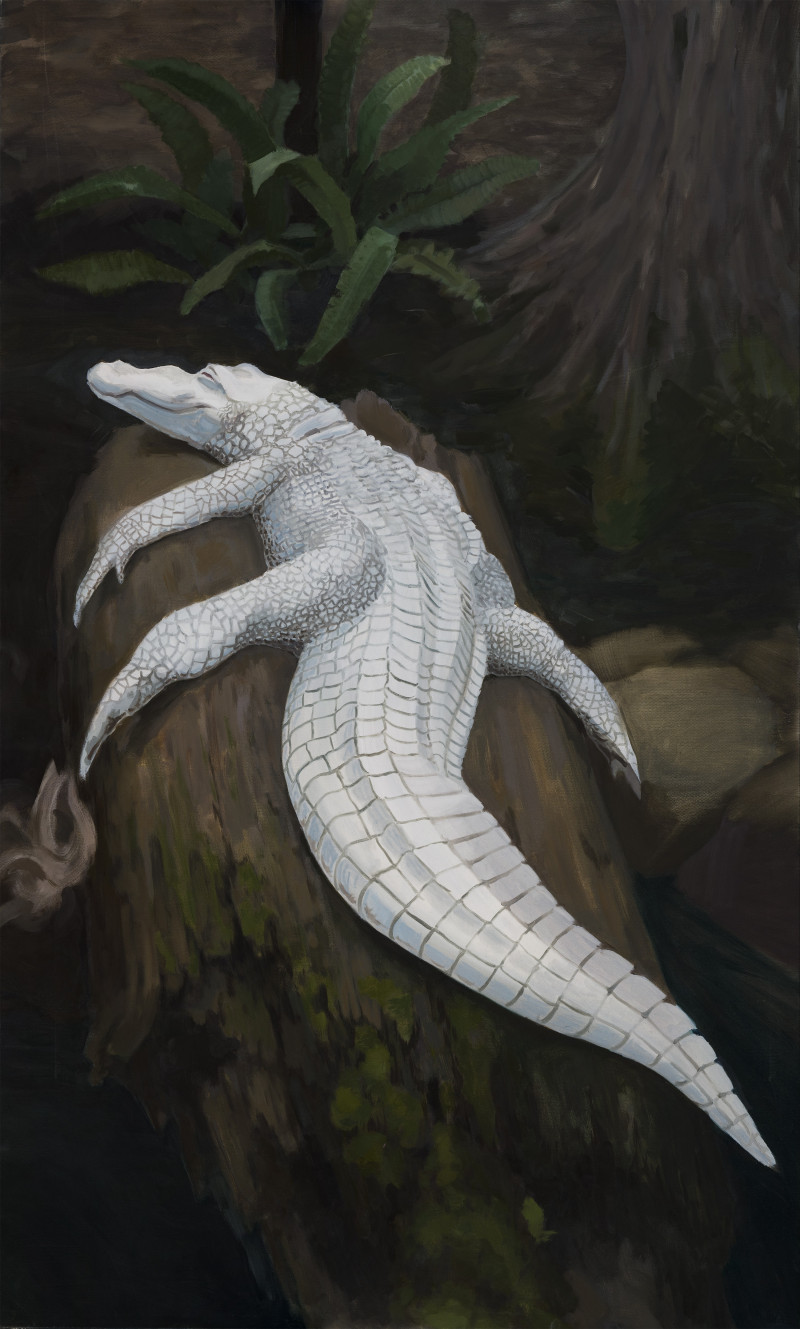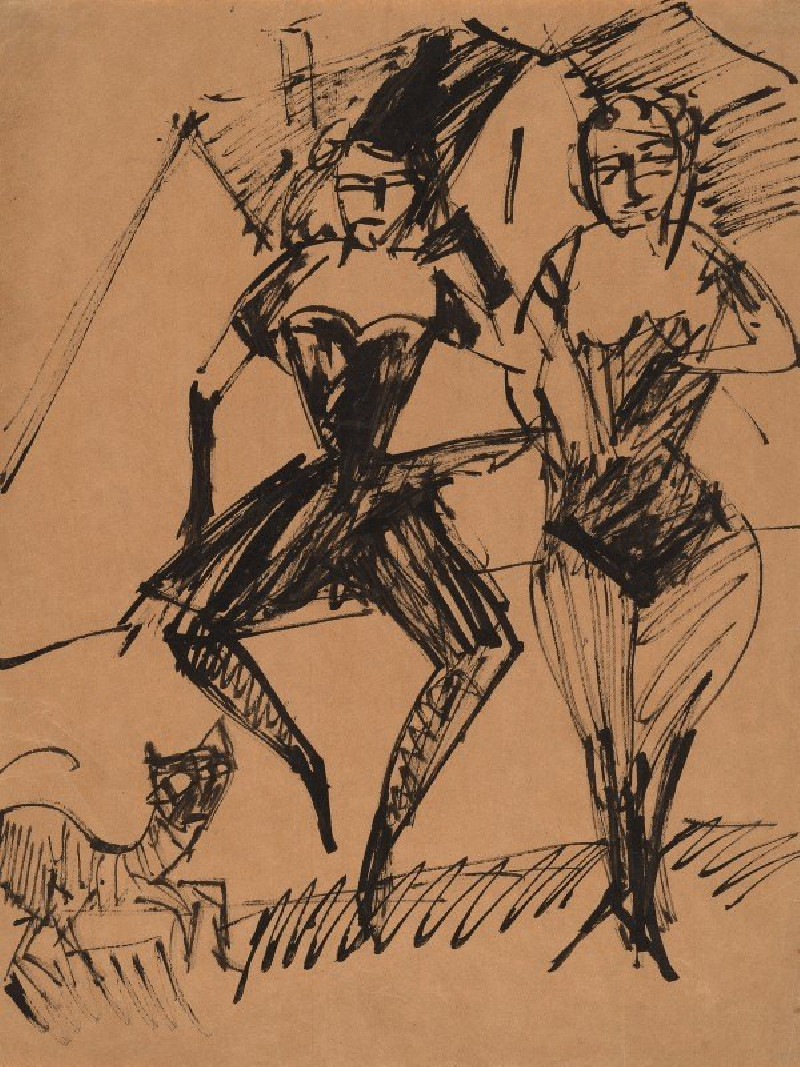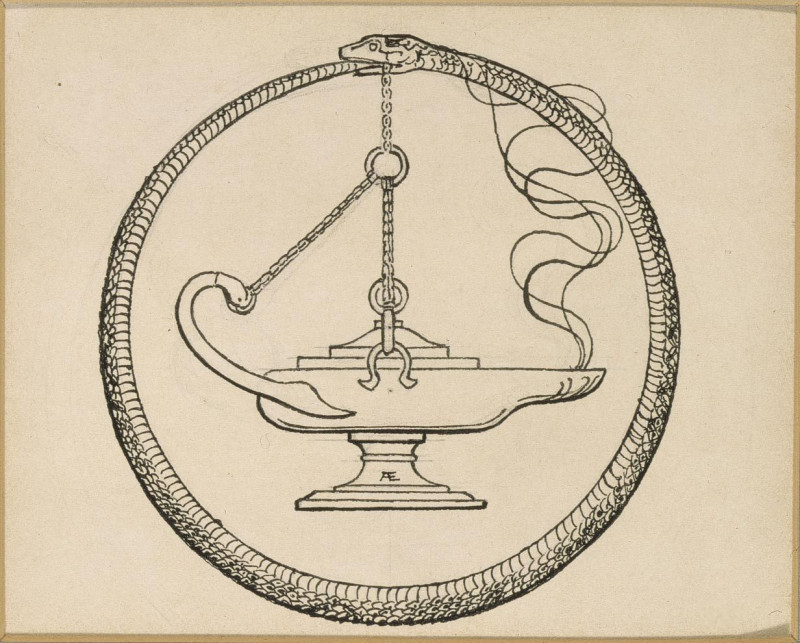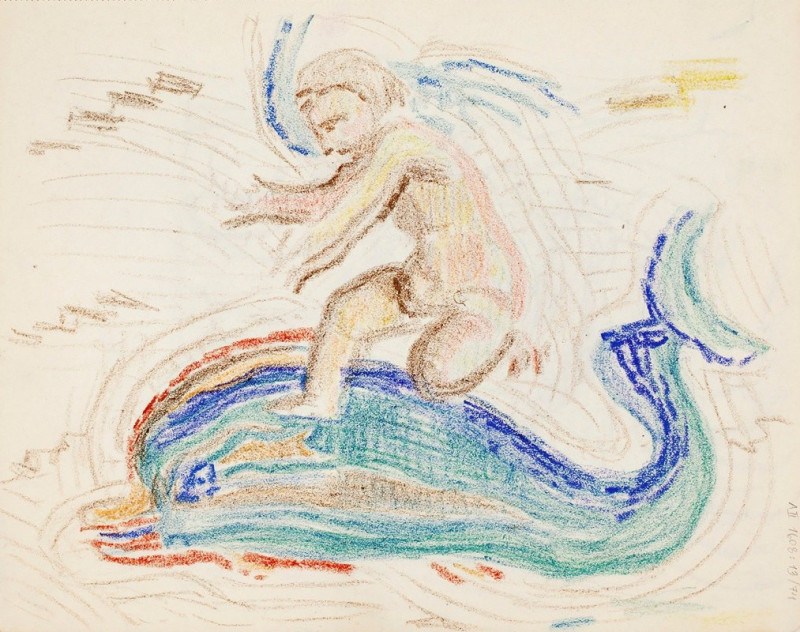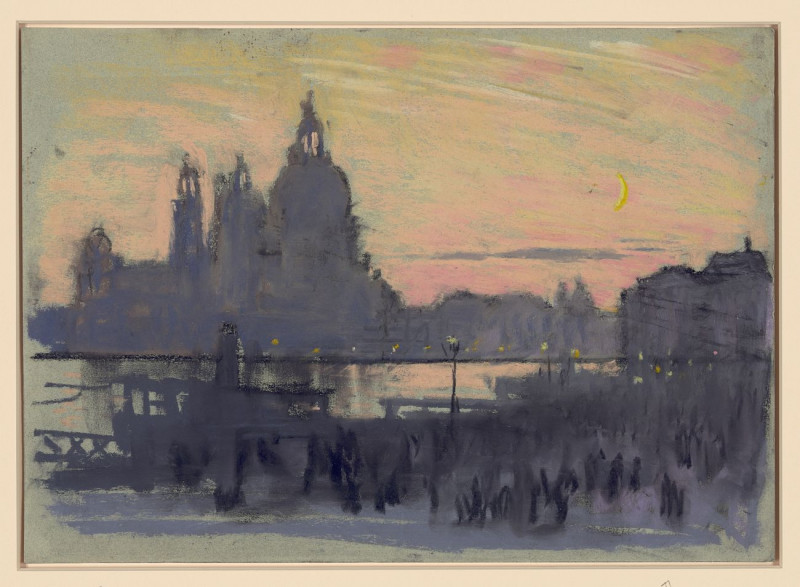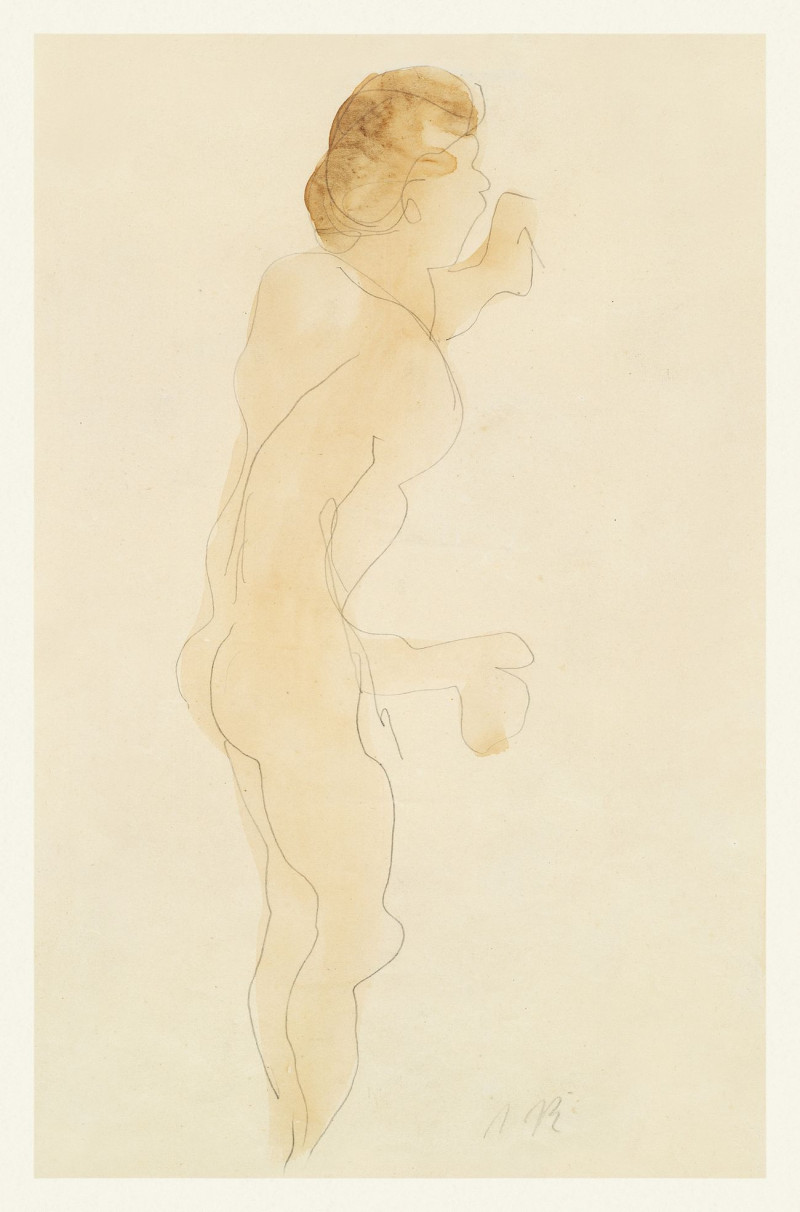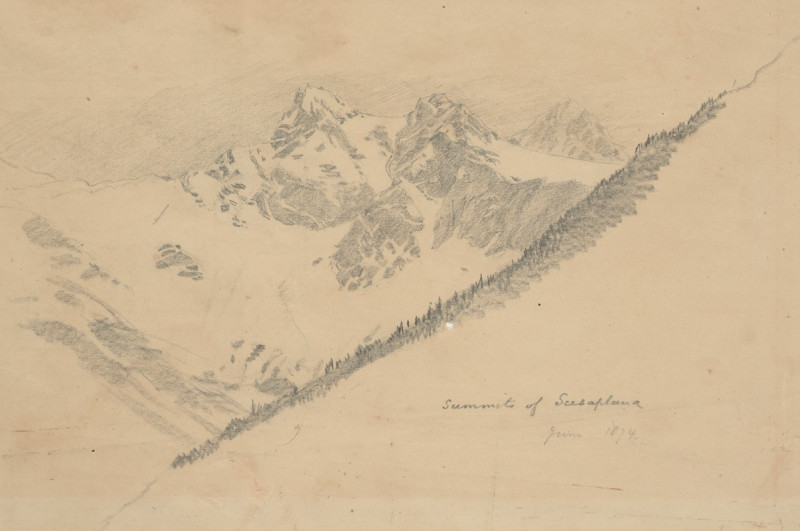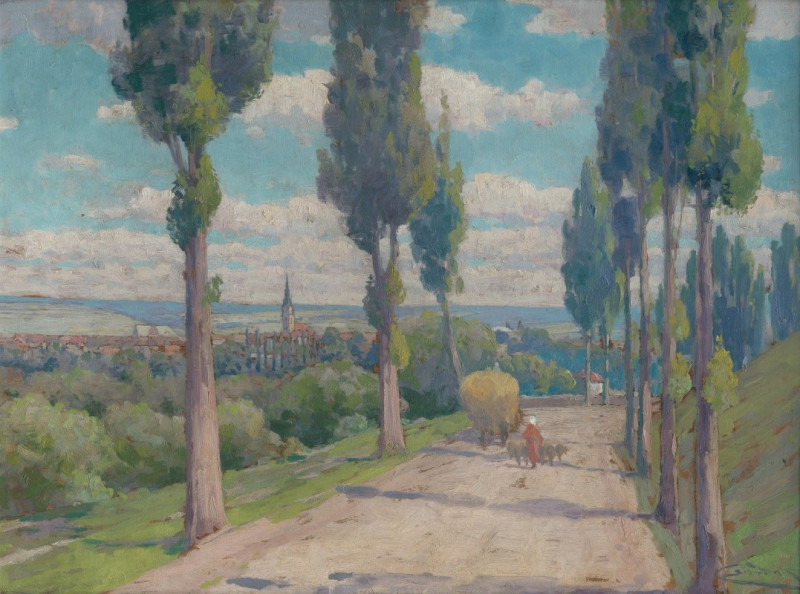Rocky Coast, Nova Scotia (1919)
Technique: Giclée quality print
Recommended by our customers
More about this artwork
Ernest Lawson's captivating painting, "Rocky Coast, Nova Scotia" (1919), beautifully encapsulates the rugged charm and serene atmosphere of the Canadian landscape. This work prominently displays Lawson’s signature style, characterized by vibrant, expressive strokes and a rich palette that conveys the untamed beauty of the region.The composition pulls viewers into a maritime scene where a rustic cabin discreetly nestles among the rounded, textured boulders that dominate the landscape. These rock formations, rendered in thick, energetic brushstrokes of grays, blues, and hints of earthy reds and greens, emphasize the natural robustness and durability of the coastal environment.A solitary sailboat gently bobs in the choppy waters near the shore, adding a sense of calm human presence and interaction with the vast, dynamic nature. Above, the sky, scattered with light clouds, mirrors the tumultuous nature of the sea below, rendered in various shades of blue and green, suggesting the constant movement of water."Rocky Coast, Nova Scotia" not only showcases Lawson’s ability to manipulate texture and color to depict the physical essence of landscapes but also evokes the emotional and atmospheric mood of the scene. This painting is a testament to the timeless allure of Nova Scotia’s coastal regions, inviting viewers to appreciate the harmony and majesty of nature embodied on canvas.
Delivery
Returns
Ernest Lawson (March 22, 1873 – December 18, 1939) was a Canadian-American painter and exhibited his work at the Canadian Art Club and as a member of the American group The Eight, artists who formed a loose association in 1908 to protest the narrowness of taste and restrictive exhibition policies of the conservative, powerful National Academy of Design. Though Lawson was primarily a landscape painter, he also painted a small number of realistic urban scenes. His painting style is heavily influenced by the art of John Henry Twachtman, J. Alden Weir, and Alfred Sisley. Though considered a Canadian-American Impressionist, Lawson falls stylistically between Impressionism and realism.

